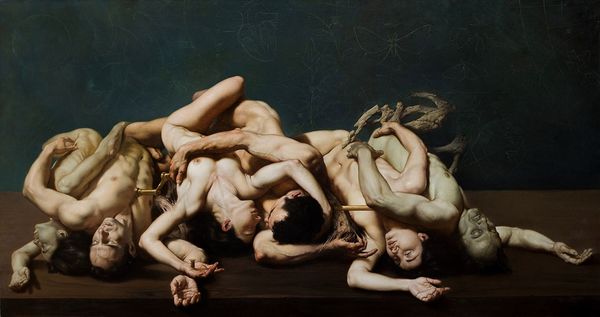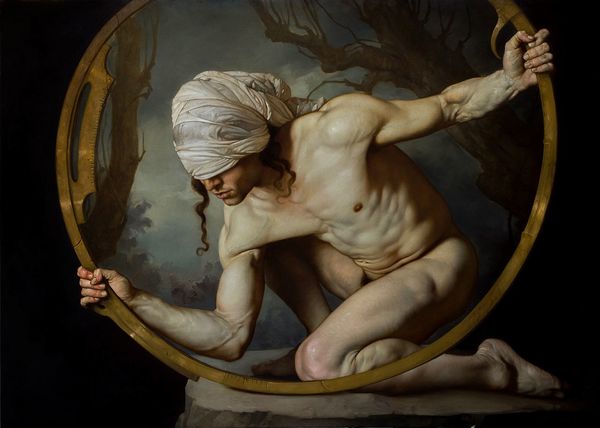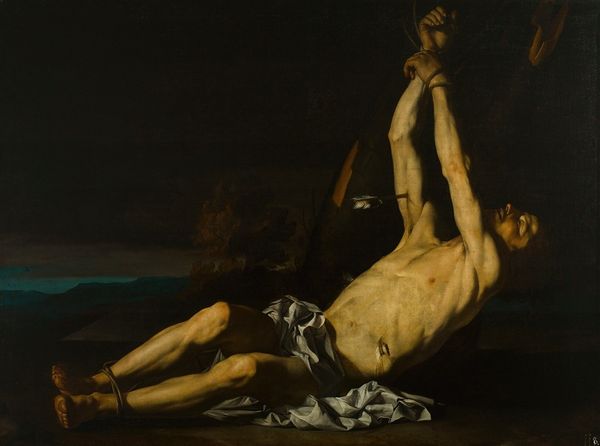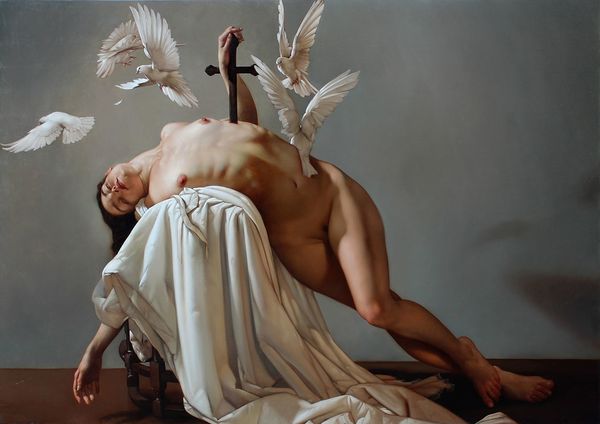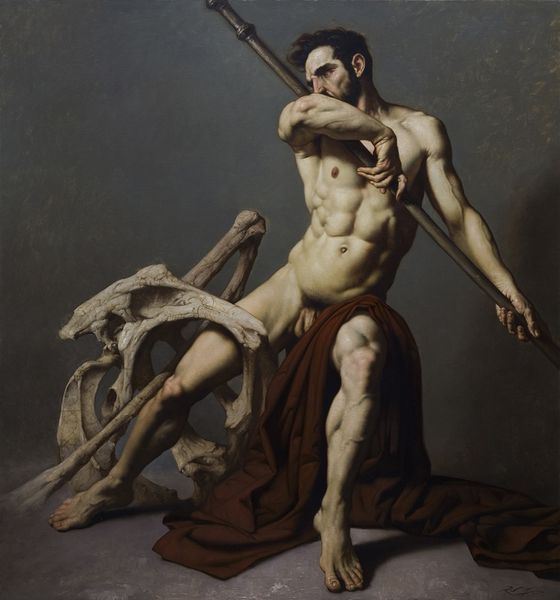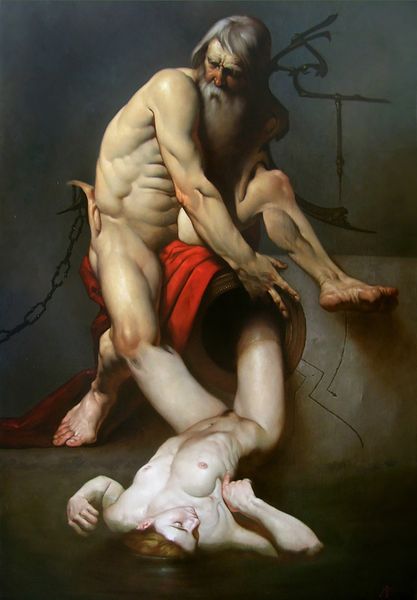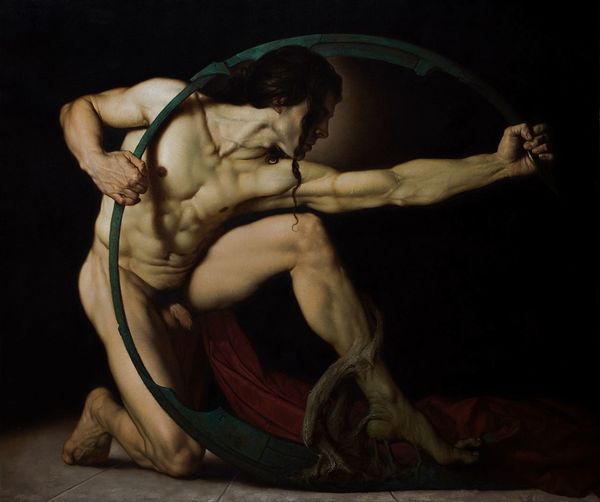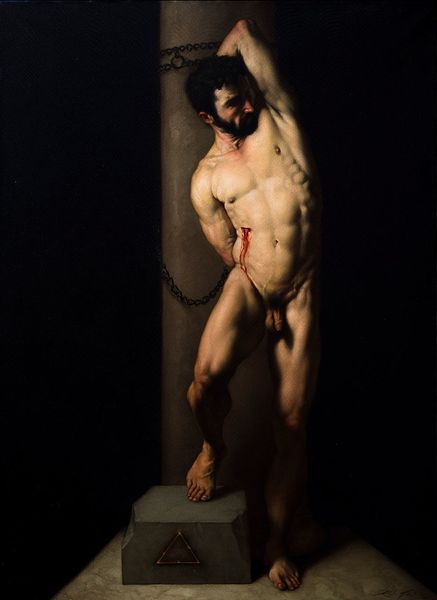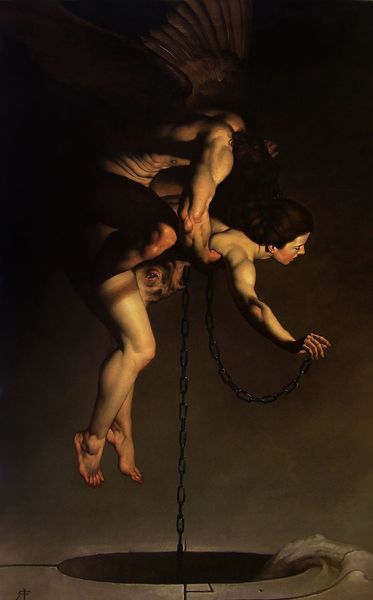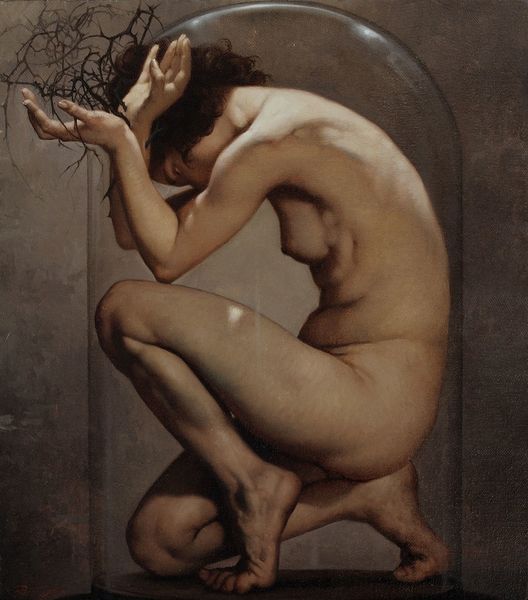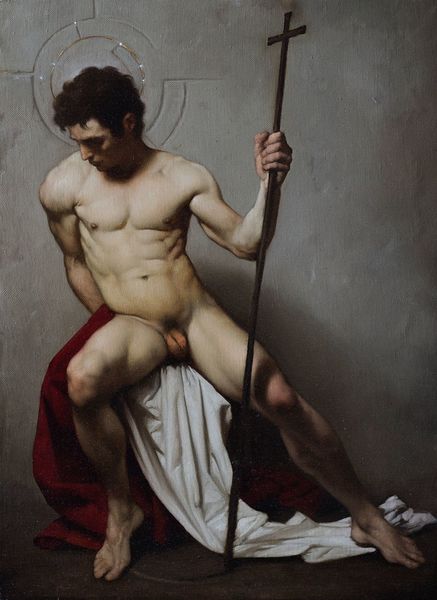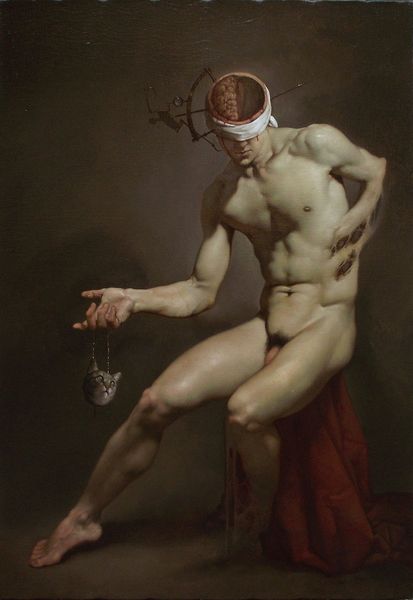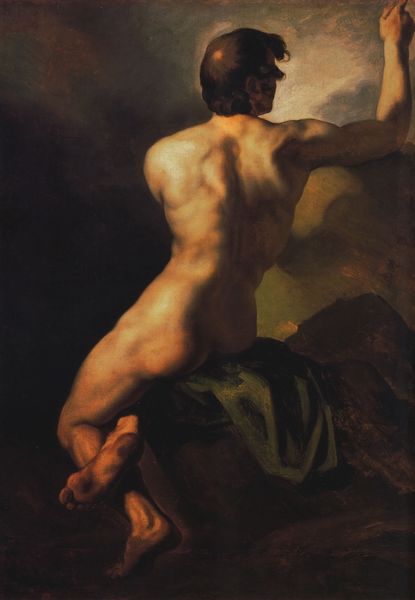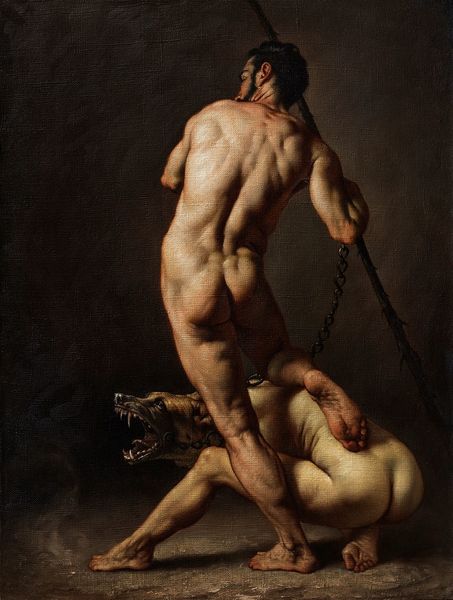
Copyright: Modern Artists: Artvee
Art Historian: We’re looking at "Februus," an oil painting created in 2017 by Roberto Ferri. The piece feels deeply rooted in both surrealist and baroque traditions, doesn't it? Curator: Immediately striking. The physicality is undeniable - the flesh tones so painstakingly rendered; the sinewy musculature... It almost hurts to look at. Such pronounced form suggests an incredible dedication to technique. What a demanding use of oil paint. Art Historian: The figure seems trapped within a large, metallic ring. Februus, you know, was an ancient Italic god associated with purification, the month of February… do you get the sense that the artist might be exploring the theme of purification through constraint here? The struggle seems palpable. Curator: Yes, but consider also how *tactile* this painting is. Look at the apparent weight of that ring – a bronzed metal, maybe iron. Note how the hands grip its cool surface so intensely that the skin stretches. The artist has given great consideration to that material. There’s an inherent commentary on what humans can do with material – how they’re bound by its laws, yet can transcend these boundaries, too. Art Historian: Exactly! The circle motif echoes through the ages – eternity, cycles, perhaps here it reflects the cyclical nature of purification itself. His tense pose is intriguing—like he is willingly confined for a transformative process. Curator: A bold choice to obscure the face, too. Denies us easy access to emotion. It's raw human experience – beautifully captured, materially impressive. You could say, that's *labor* incarnate, to arrive to this level of realism. I bet there are several layers and glazes in this. Art Historian: That facelessness lends it a universality; it moves beyond an individual's struggle to something broader – a human condition. It recalls religious symbolism with an intensity not easily dismissed, connecting this artwork to larger ideas around mortality and rebirth. The hands tell the story. Curator: The longer I examine it, the more conscious I am of the labor poured into crafting every vein, every tendon. Think about the consumption required: canvas, oils, brushes... Ferri engages deeply with art history here, clearly demonstrating immense control over the traditional art-making process, to give us, a glimpse of modernity, I believe. Art Historian: So true, looking at art through this approach offers unique insights on humanity! The work seems filled with layers of meaning! Curator: Absolutely. It prompts one to examine just how human artistry continues transforming raw material and symbolism into compelling reflections on humanity and experience.
Comments
No comments
Be the first to comment and join the conversation on the ultimate creative platform.
